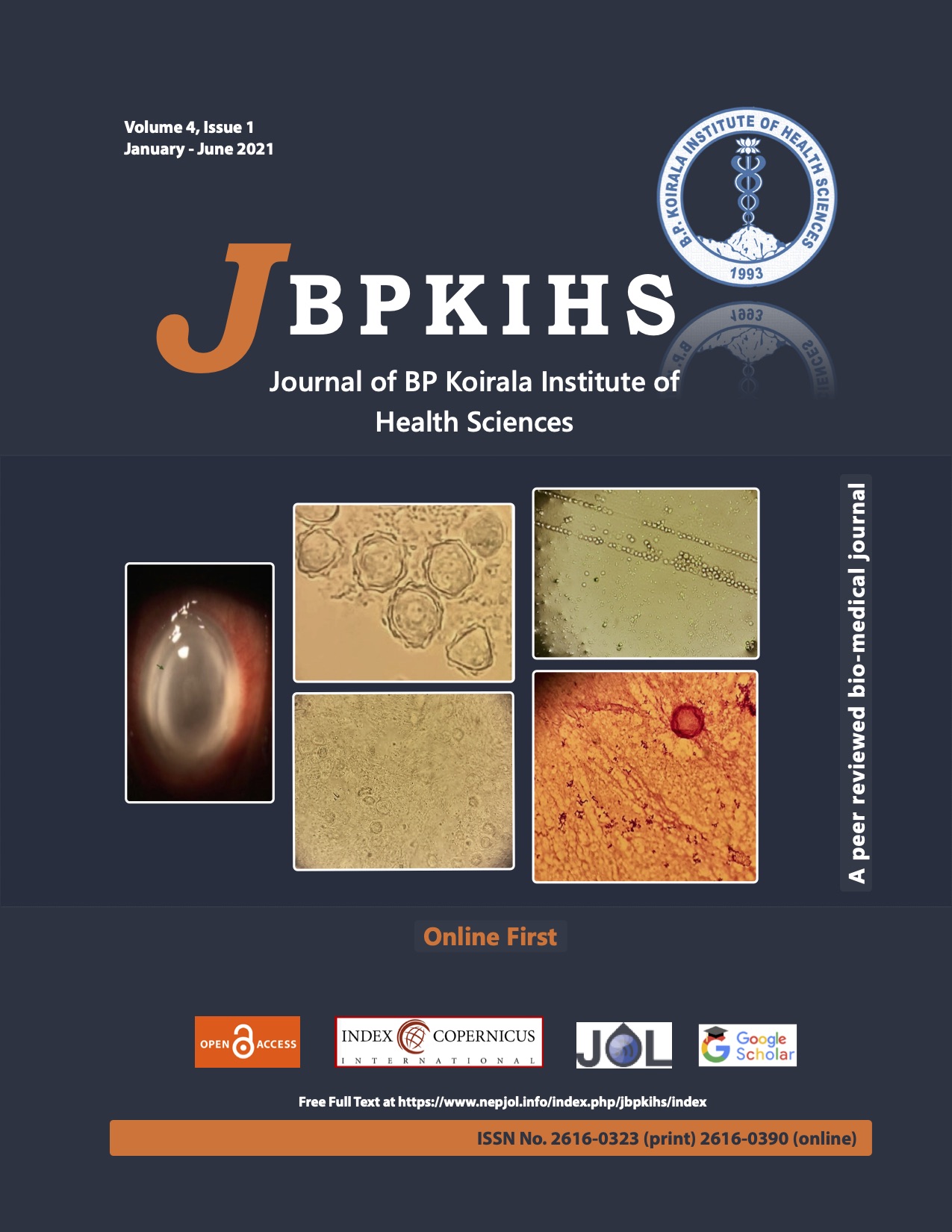Detection of Carbamazepine Level among Patients Visiting Psychiatric and Pediatric Services of a Tertiary Hospital in Eastern Nepal
DOI:
https://doi.org/10.3126/jbpkihs.v4i1.36993Keywords:
Carbamazepine, High performance liquid chromatography, Plasma level, ToxicityAbstract
Background: Carbamazepine plasma level is directly related to dose, therapeutic effect, and toxicity. We aimed to observe its plasma level and relationship with dose among psychiatric and pediatric patients.
Methods: This observational study was performed in the Therapeutic Drug Monitoring Laboratory of a university hospital for a period of 1.5 years. Twenty-six consenting patients visiting either psychiatric or pediatric service and taking carbamazepine same dose for > 8 days (i.e. > 6 half-lives) were enrolled. The primary outcome was plasma carbamazepine level as determined by a High-Performance Liquid Chromatography machine. The secondary outcome included its correlation with dose assessed by the Spearman rho’s correlation coefficient.
Results: The mean dose received by the patients was 13.31 ± 5.39 mg/kg/day in pediatrics and 8.33 ± 2.29 mg/kg/day in psychiatry. The plasma levels [median (IQR)] were 10.01 (6.27, 13.35) mg/L and 10.53 (5.17, 15.19) mg/L respectively in pediatric and psychiatric patients. Thirteen patients (50%) had therapeutic, 10 (36.46%) had above therapeutic, and 3 (11.54%) had subtherapeutic plasma level. Neurocysticercosis (23.1%) in pediatrics and partial seizure (69%) in psychiatry were the most common diagnosis. Symptom-control was achieved in 19 (73.1%) patients. The plasma carbamazepine level did not correlate with dose either in pediatric patients (p = 0.42) or in psychiatry patients (p = 0.63).
Conclusion: The plasma carbamazepine levels [median (IQR)] in pediatric and psychiatric patients were 10.01 (6.27, 13.35) mg/L and 10.53 (5.17, 15.19) mg/L respectively. The plasma level was normal in half of the recruited patients and did not correlate with dose.
Downloads
Downloads
Published
How to Cite
Issue
Section
License
This license enables reusers to copy and distribute the material in any medium or format in unadapted form only, for noncommercial purposes only, and only so long as attribution is given to the creator.




